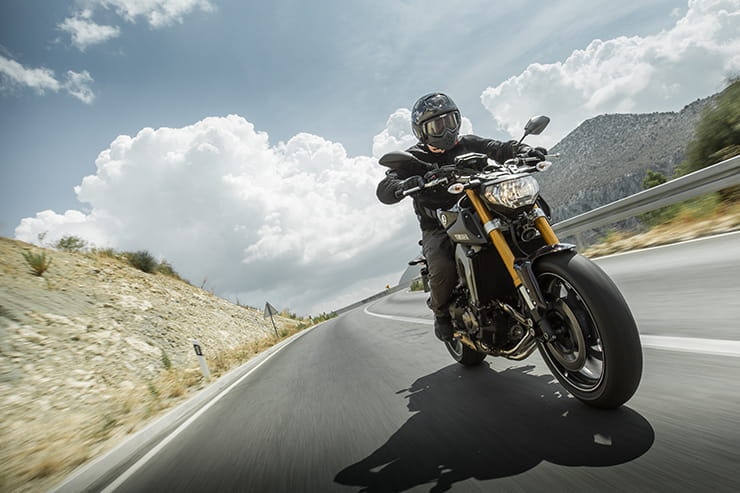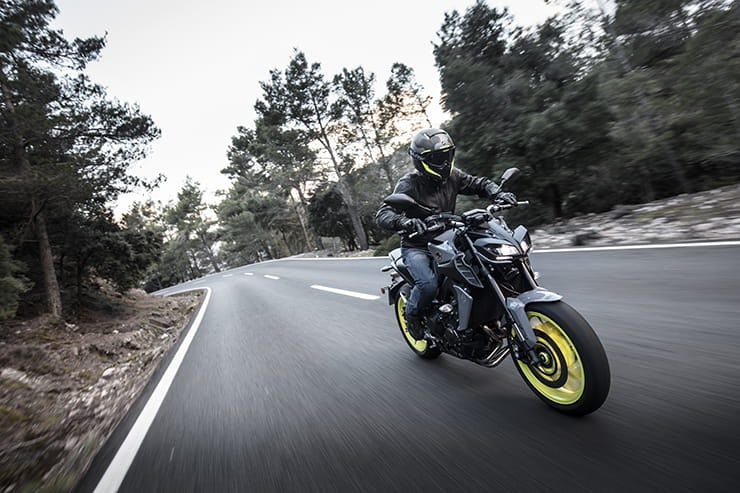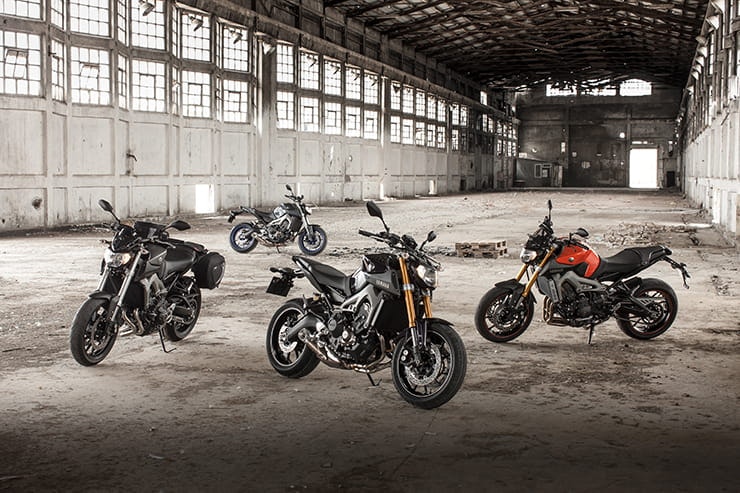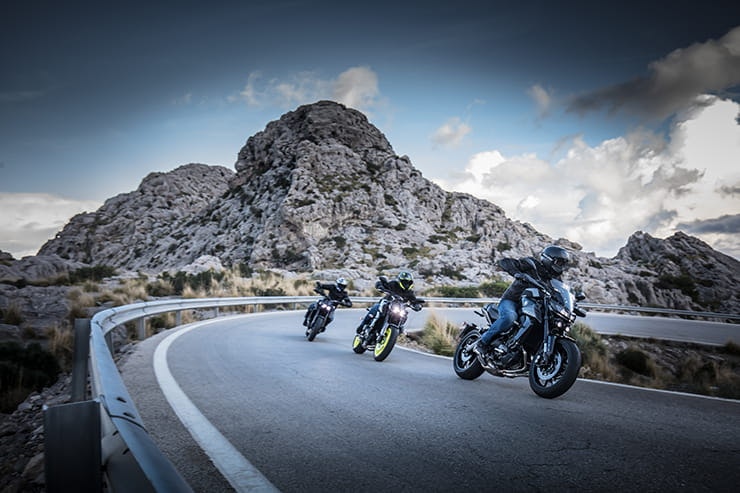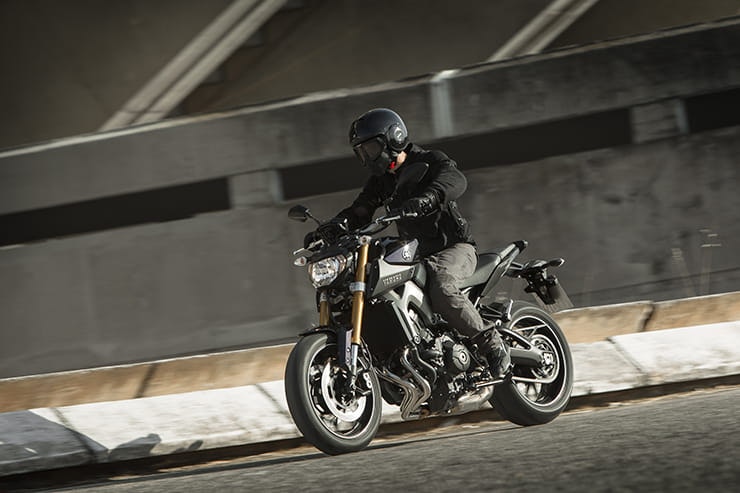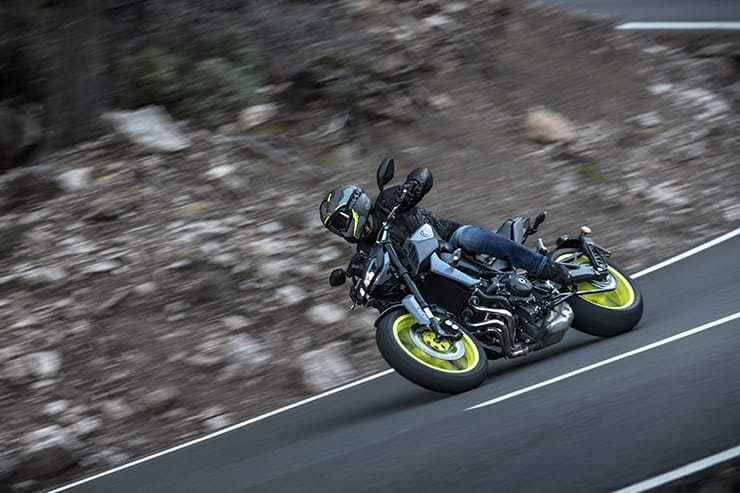Yamaha MT-09 (2013-2020) - Review & Buying Guide
By Jon Urry
Massively experienced road tester
21.01.2021
Launched in 2013, the MT-09 has been a massive seller for Yamaha and alongside the MT-07 is responsible for the Japanese firm’s image transformation and huge success in recent years. While its aggressive ‘Dark Side’ styling ensures the MT stands out, the real key to its popularity is the CP3 triple motor, which is quite simply brilliant and arguably one of the most fun engines currently on the market. In fact, it is so good many owners brush over a few of the MT’s failings as they are so taken by it... If you want a naked bike that is guaranteed to make you grin every time you twist the throttle, the Yamaha MT-09 is for you.
Yamaha MT-09 (2013 – 2020) Price
The whole MT range has always been very keenly priced and the MT-09 is no exception. An RRP of under £7000 in 2013 was exceptionally cheap considering the performance you got and in the used market the MT isn’t bad value at all. You can pick up an early bike for in the region of £4000 while a second-generation model is likely to set you back closer to £5500-£6000 for an early one. Considering the new (and heavily revised it has to be said) 2021 model is £9000 that’s not a bad saving.
Power and torque
This joy of the triple motor is the fact it blends all the torque characteristics of a twin with the rev-happy nature of an inline four. The MT’s CP3 is a real hoot to ride with lots of instant punch and a free-revving and light feel when you give it some gas. Early bikes were criticised as the throttle pick-up was a touch abrupt, something Yamaha addressed in an ECU update a year later, while the 2017 model’s mapping was refined even more. Some riders chalk the snatch down to character while others get the ECU re-mapped to make it more fluid, it’s a personal choice thing and it is far less annoying than on the way too aggressive MT-10. Although there are three modes to play with to reduce the aggression of the power delivery, most riders simply find a mode that suits them and leave it in that one.
Engine, gearbox and exhaust
Quite strangely for an all-new motor, faults are very few and far between when it comes to the CP3 engine. Across all the range of CP3-powered motors you will struggle to find any huge issues and so it is more down to servicing with the 24,000 valve-clearance check the biggy. A few owners report sensors failing but that’s not entirely Yamaha’s fault. The build quality isn’t bad considering the MT’s low-price tag however corrosion on exposed metal parts can set in if not kept on top of and the OE exhaust can discolour and look a bit second hand quite quickly. The second generation’s quickshifter can’t be put on the original model, which is a bit of a shame. Overall, an MT-09 with a full-service history is a safe buy in terms of its mechanics and so you only need to concentrate on its visual appearance and be wary of any crash damage. Always check the head bearings on any used MT as they do like to pull the occasional wheelie and not everyone is good at landing them gently... The second generation gains a slip and assist clutch, which brings with it a 20% lighter clutch action. A few owners complain of a slipping clutch, but it’s an easy fix through new plates.
Yamaha MT-09 (2013 – 2020) Economy
Surprisingly, the triple motor is very fuel efficient and although the MT only has a 14-litre tank, it averages just below 50mpg and as a result can cover around 140 miles between fill-ups. The fuel gauge tends to be a bit pessimistic and you can go a long way on reserve..
Handling, suspension, chassis and weight
Yamaha designed the MT as a kind of mix between a supermoto and a naked bike, which is both a good and bad thing. Physically larger than the likes of the more compact and sporty Street Triple, the MT’s more upright riding position is nice and comfortable and more suited to larger riders however the suspension is an issue. The longer travel forks tend to dive quite a lot while the shock is set way too softly, a combination that results in the bike rocking and pitching back and forth under braking and acceleration. Even at a gentle pace it can be a bit annoying and although you get rebound damping and spring preload on the forks and rebound damping and spring preload on the shock to alter, there isn’t much you can do. In 2017 Yamaha added compression damping to the forks (it’s a split system with rebound on one fork and compression no the other) it is still an issue if you want to ride at a brisk pace and the only real solution is a fork re-valve (around £150) and replacing the OE shock with a quality aftermarket unit. Or buying the higher-spec MT-09 SP with its Öhlins shock and uprated forks. With its suspension sorted the MT is transformed and becomes an excellent handling bike that is ideally suited to the UK’s roads. When buying used be wary of the suspension linkages on older bikes as Yamaha are notoriously stingy with grease and they can seize up. Pleasingly for shorter riders, the MT has not only a low 815mm seat height (it gained 5mm on the updated model) but also a featherweight 191kg wet weight, meaning it is very manageable at low speed.
Yamaha MT-09 (2013 – 2020) Brakes
The original generation of MT-09 was offered with the option of ABS, something that became standard fitment when the bike was updated in 2017. The four-piston radial brakes are a strong set-up however a few owners feel the OE Yamaha pads are a bit lacking in power and feel, so swap them for higher friction alternative to increase their performance. The ABS system lacks angle-sensitivity but is ok for road use. If you are planning track riding, you may wish to delve under the seat and locate the ABS fuse, which is the only way to disable the system...
Comfort over distance and touring
You can fit panniers and a screen and take the MT touring but realistically, if that’s you planned use you might as well buy the Tracer 900 or Tracer 900 GT, which is effectively the sports touring version of the MT-09.
Rider aids and extra equipment / accessories
The MT has always come with three power modes – A, B and STD – however on the first-generation ABS was an optional extra where it was standard fitment on the updated 2017 model. The 2017 bike also gained three-stage traction control – 1, 2 and off – and a quickshifter as standard, which is pretty cool. In terms of accessories, the area every owner addresses is the shock so a quality aftermarket shock is always a great thing to see on a used bike as sorting the forks is far cheaper at around £150 where a shock is in the region of £500. As the OE exhaust is a one-piece unit you need to change the whole system to upgrade, which isn’t a bad thing to do as it loses the cats and gains a bit of mid-range, but you need to get the ECU remapped to suit or a fuelling module fitted. A few owners fit a screen, which isn’t a bad option as it is quite effective, and as well as Yamaha, aftermarket firms make pannier kits. Just be aware some pannier kits require the same locating points as an aftermarket shock’s remote preload adjuster, which means you may need a new bracket being fabricated.
Yamaha MT-09 (2013 – 2020) verdict
The MT-09 isn’t perfect and owners often gripe about its poor suspension, however when you ask them if they want to trade in their bike they all refuse simply because the MT is such good fun to ride due to its amazing triple motor. Buy a used one at a decent price, upgrade the shock for a quality aftermarket item and get the forks re-valved and you will absolutely fall in love with Yamaha’s simply brilliant naked.
Three things we love about the MT-09…
Hysterical triple motor
Roomy riding position
Fun factor
Three things that we don’t…
Soggy suspension
Aggressive throttle pick-up
Build quality in a few areas
Yamaha MT-09 (2013 – 2020) spec
Looking for bike insurance? Get a quote for this motorcycle with Bennetts motorbike insurance
